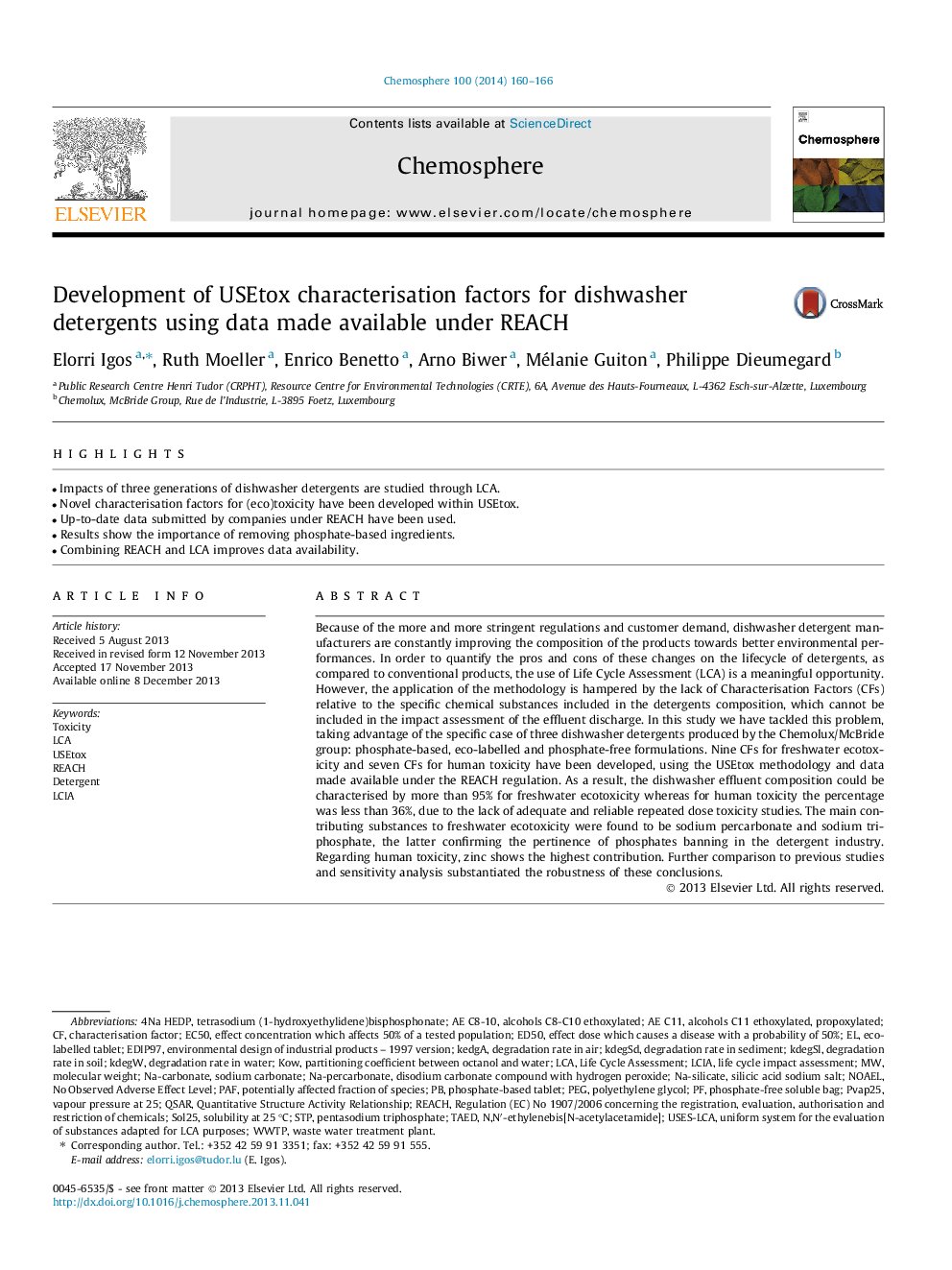| Article ID | Journal | Published Year | Pages | File Type |
|---|---|---|---|---|
| 6309485 | Chemosphere | 2014 | 7 Pages |
Abstract
Because of the more and more stringent regulations and customer demand, dishwasher detergent manufacturers are constantly improving the composition of the products towards better environmental performances. In order to quantify the pros and cons of these changes on the lifecycle of detergents, as compared to conventional products, the use of Life Cycle Assessment (LCA) is a meaningful opportunity. However, the application of the methodology is hampered by the lack of Characterisation Factors (CFs) relative to the specific chemical substances included in the detergents composition, which cannot be included in the impact assessment of the effluent discharge. In this study we have tackled this problem, taking advantage of the specific case of three dishwasher detergents produced by the Chemolux/McBride group: phosphate-based, eco-labelled and phosphate-free formulations. Nine CFs for freshwater ecotoxicity and seven CFs for human toxicity have been developed, using the USEtox methodology and data made available under the REACH regulation. As a result, the dishwasher effluent composition could be characterised by more than 95% for freshwater ecotoxicity whereas for human toxicity the percentage was less than 36%, due to the lack of adequate and reliable repeated dose toxicity studies. The main contributing substances to freshwater ecotoxicity were found to be sodium percarbonate and sodium triphosphate, the latter confirming the pertinence of phosphates banning in the detergent industry. Regarding human toxicity, zinc shows the highest contribution. Further comparison to previous studies and sensitivity analysis substantiated the robustness of these conclusions.
Related Topics
Life Sciences
Environmental Science
Environmental Chemistry
Authors
Elorri Igos, Ruth Moeller, Enrico Benetto, Arno Biwer, Mélanie Guiton, Philippe Dieumegard,
